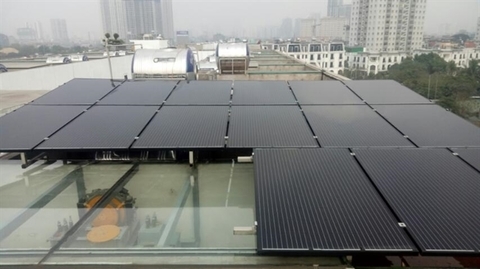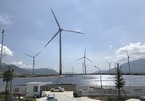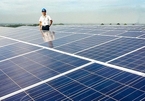Renewable energy (wind and solar power) is an effective solution to ensure the nation’s energy security.

Vietnamese leaders have created a power restructuring strategy in which renewable power would account for 15-20 percent of total primary power supply by 2030, and 25-30 percent by 2035.
Analysts say that the figures show big changes in Vietnamese mindset, if noting that the seventh national electricity development plan sets lower goals: renewable energy accounts for only 10 percent of total installation capacity and 2.5 percent of electricity output.
Under the seventh plan, Vietnam still would have 26,000 MW of coal-fired thermopower by 2020, 47,600 MW by 2025 and 55,300 MW by 2030, accounting for 49.3 percent, 55 percent and 53.2 percent, respectively.
| Thanks to open policies, wind and solar power capacity has soared in the last three years, from zero before 2016 to 5,400 MW as of May 2020. Vietnam has become one of the busiest renewable energy markets in Southeast Asia. |
Thanks to open policies, wind and solar power capacity has soared in the last three years, from zero before 2016 to 5,400 MW as of May 2020. Vietnam has become one of the busiest renewable energy markets in Southeast Asia.
However, the energy shift is a complex problem, which requires many factors to change at the same time, including policies related to investment and electricity quality standards; development of intelligent power systems and grids; and development of the renewable energy market, database updating, training and improvement of technical capacity, research and technology transfer, and changes in production and consumption behaviors.
The rapid development of renewable energy sources, for example, has posed great challenges to the transmission system. Power projects in Ninh Thuan and Binh Thuan cannot provide electricity to the national grid.
Nguyen Van Do, director of the Ca Mau Department of Industry and Trade, said the local transmission network is capable of receiving only 40 percent of the total capacity of the existing renewable power projects in the province.
Clean energy is unstable and harder to operate than traditional energy. Therefore, the electricity system integrated with it needs to be ‘smarter’, which means it can store and release electricity when necessary.
The current selling price applied to solar power projects is 9.35 cent per kwh, or VND2,086, higher than the average electricity retail price is VND1,864.4 per kwh.
Environmentalists have called on the governmetn to step by step switch from coal-fire thermopower to renewable power. According to the the Green Innovation and Development Centre (GreenID), the countries that develop renewable energy now rather than later will have certain advantages.
Chi Mai

VN lacks mechanisms for private investment in renewable energy
Many private enterprises said they want to invest in building renewable energy infrastructure, but Viet Nam still lacks mechanisms to encourage private enterprises to participate in this activity.

Renewable energy market picks up as many projects put on sale
As wind and solar power project developers now can enjoy a high FIT (feed in tariff) price, investors are registering more projects to resell for profit.
 Like other countries, Vietnam is striving to use more renewable energy instead of fossil fuels.
Like other countries, Vietnam is striving to use more renewable energy instead of fossil fuels.